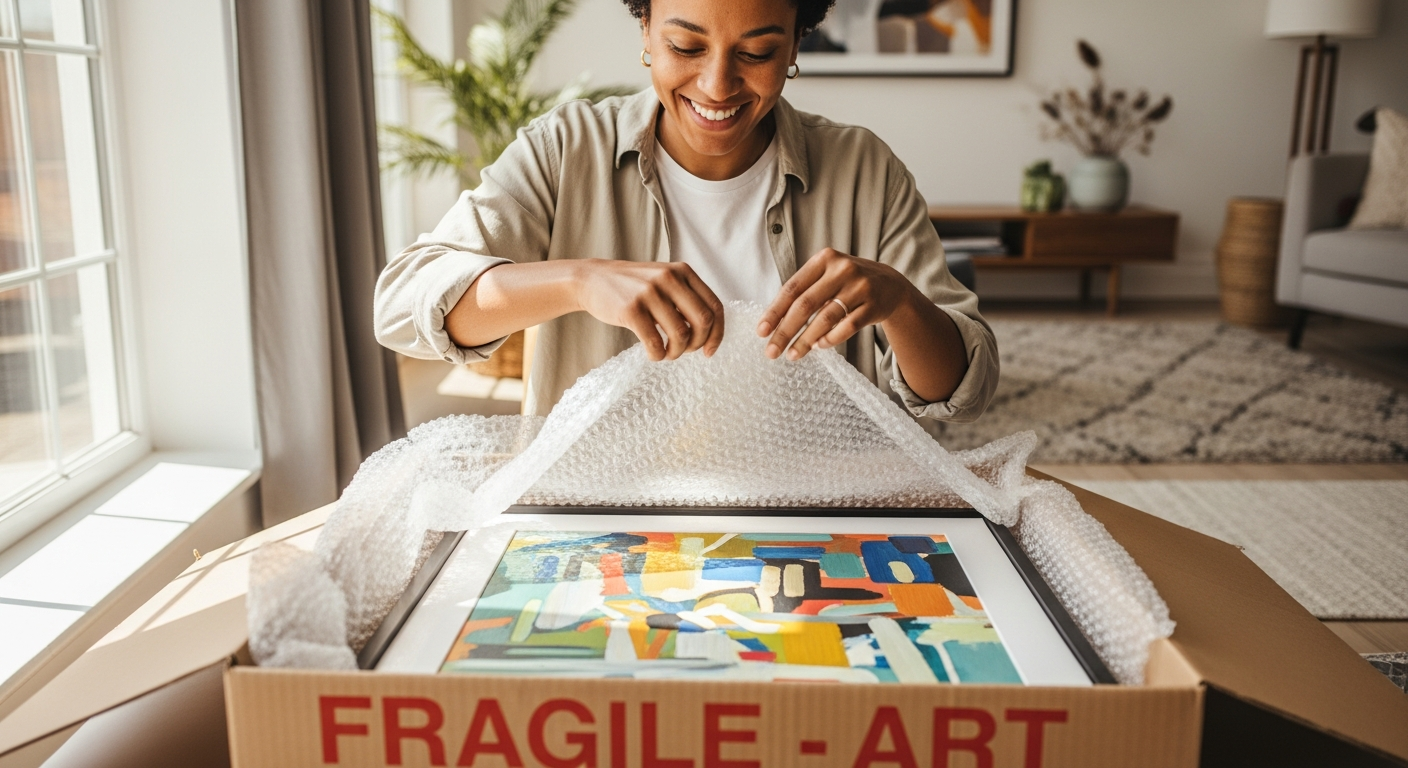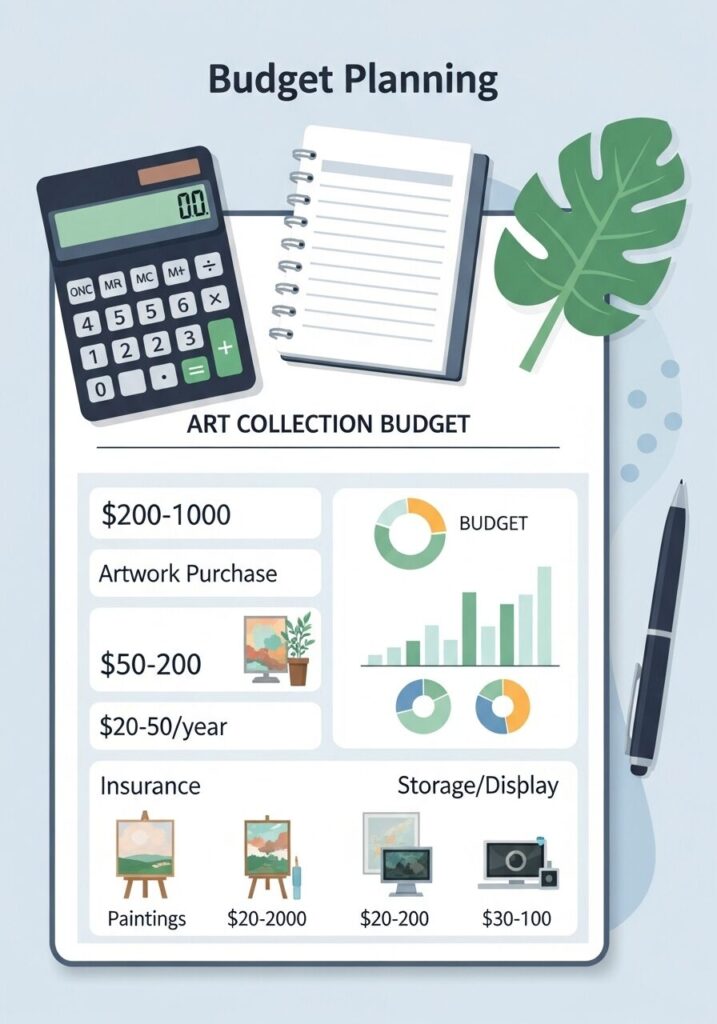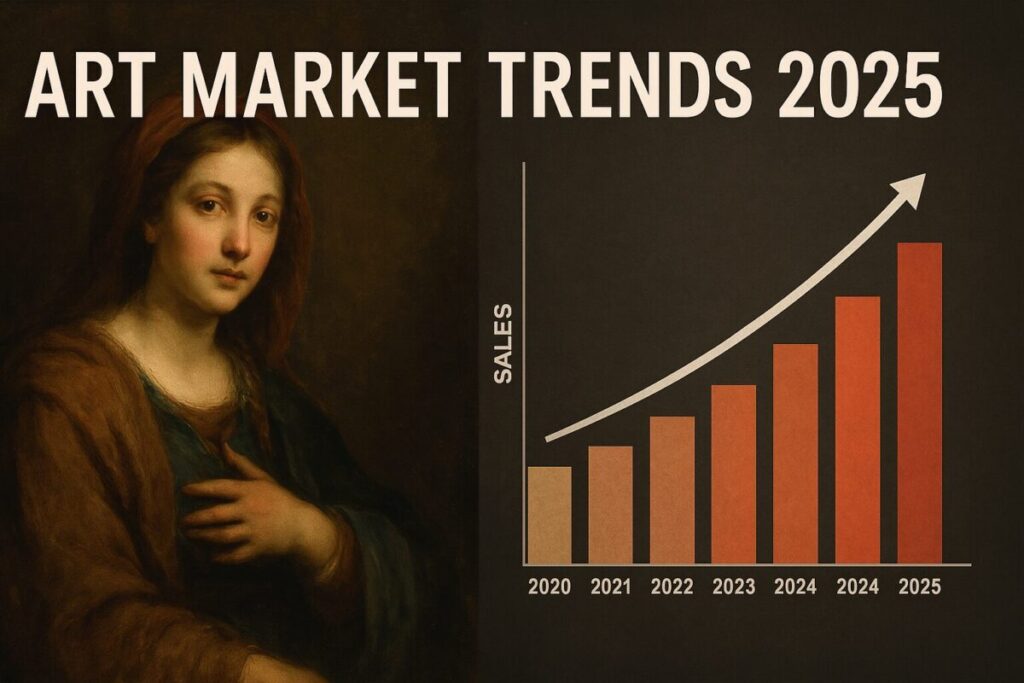Shopping for art online has completely changed the game. Whether you’re scrolling through your phone at midnight or researching from your laptop during lunch break, you can now discover thousands of unique pieces from artists around the world. But here’s the thing: with so many online art marketplaces to choose from, how do you know where to start? This comprehensive online art marketplaces buyer guide will walk you through everything you need to know to confidently purchase authentic art online without getting overwhelmed or scammed.
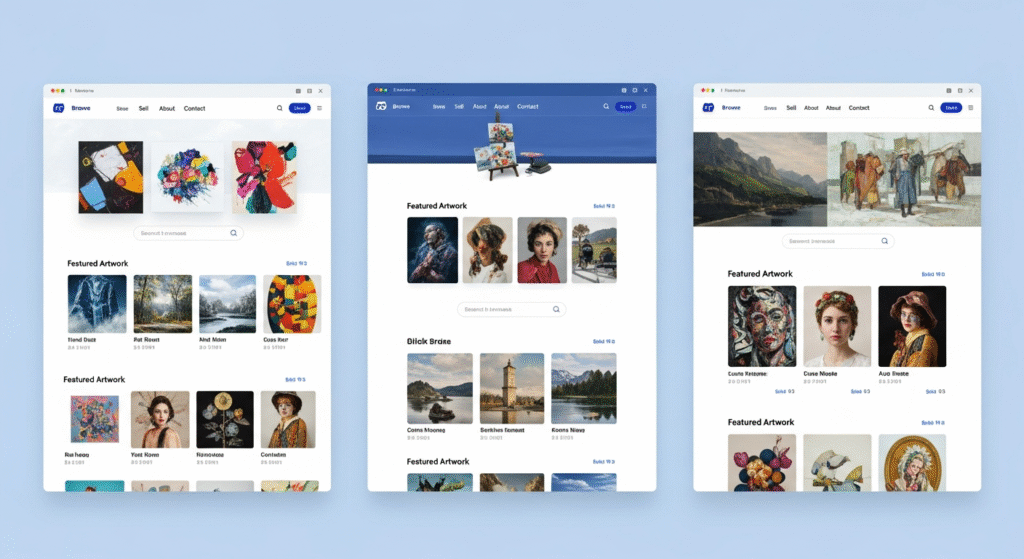
Key Takeaways
- Multiple marketplace types exist—from curated galleries to direct-from-artist platforms and NFT marketplaces
- Vetting authenticity is crucial: always check provenance, artist reputation, and seller reviews
- Define your budget and taste before browsing to avoid impulse purchases
- Shipping and insurance costs can add 15-30% to your total investment
- Return policies vary dramatically between platforms—read them carefully
- Emerging artists online offer unique pieces at accessible prices
- Digital art platforms and NFT marketplaces are expanding the definition of art collecting
- Payment security should never be compromised—stick to reputable platforms
Understanding Different Types of Online Art Marketplaces
Not all art platforms are created equal. Understanding the different types helps you target your search and find exactly what you’re looking for.
Curated Marketplaces: Quality Meets Curation
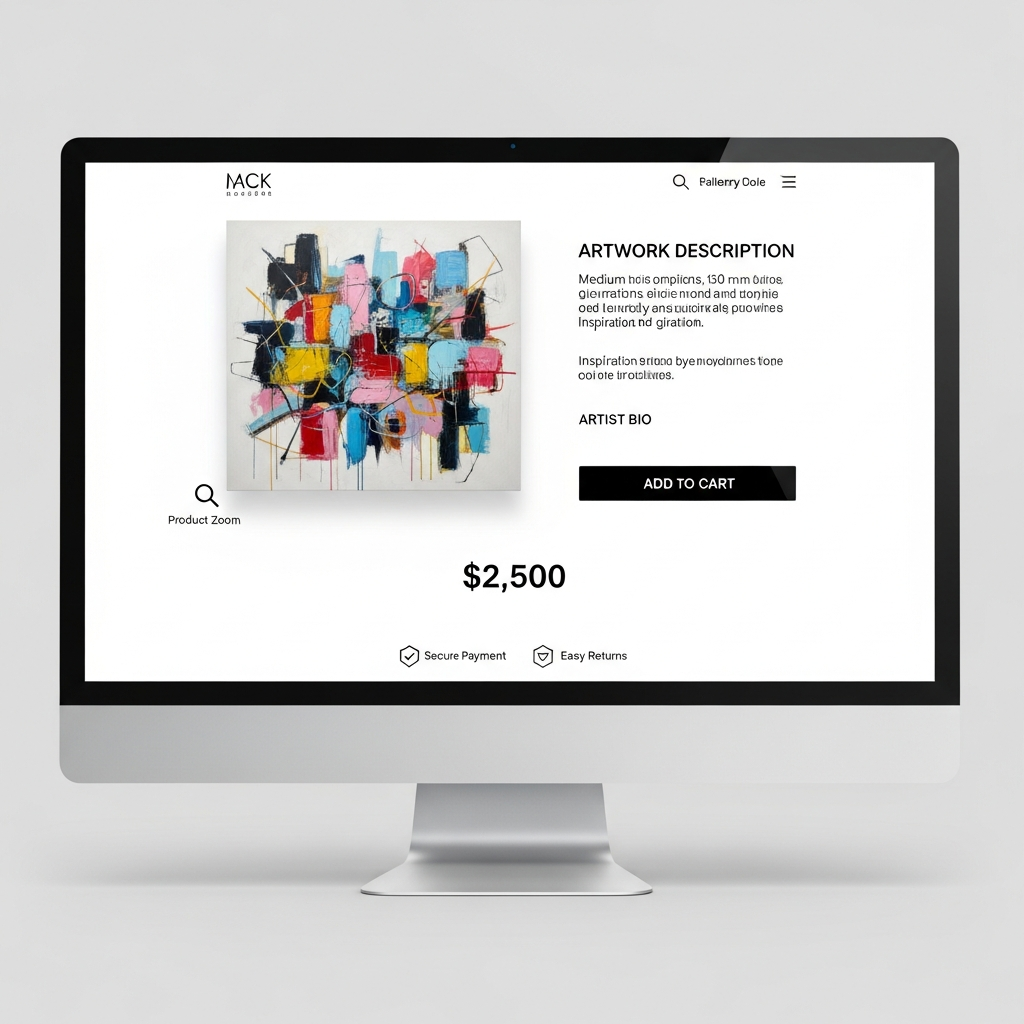
Think of curated marketplaces as the art world’s selective gatekeepers. Platforms like Saatchi Art and Artsy carefully vet artists and artwork before allowing them on their sites, and list original artwork. You’ll find established and emerging artists side by side, with detailed descriptions and professional photography.
Pros:
- Pre-vetted quality artworks
- Professional presentation
- Often include artist bios and exhibition histories
- Buyer protection policies
Cons:
- Higher price points
- Less room for negotiation
- More formal buying process
When you’re interested in learning more about how the art market has evolved, these platforms represent the modern intersection of traditional galleries and digital accessibility.
Auction Platforms: Bidding for Premium Pieces
Major auction houses like Sotheby’s and Christie’s now operate robust online platforms. These sites host auctions for premium artworks, from old masters to contemporary pieces.
Perfect for:
- Experienced collectors
- Investment-grade art purchases
- Access to rare, high-value pieces
Keep in mind:
- Buyer’s premiums (typically 15-25%)
- Authentication documentation
- More complex return processes
Understanding what makes paintings valuable becomes especially important when bidding at auction, where prices can escalate quickly.
Direct-from-Artist Platforms: Supporting Independent Creators
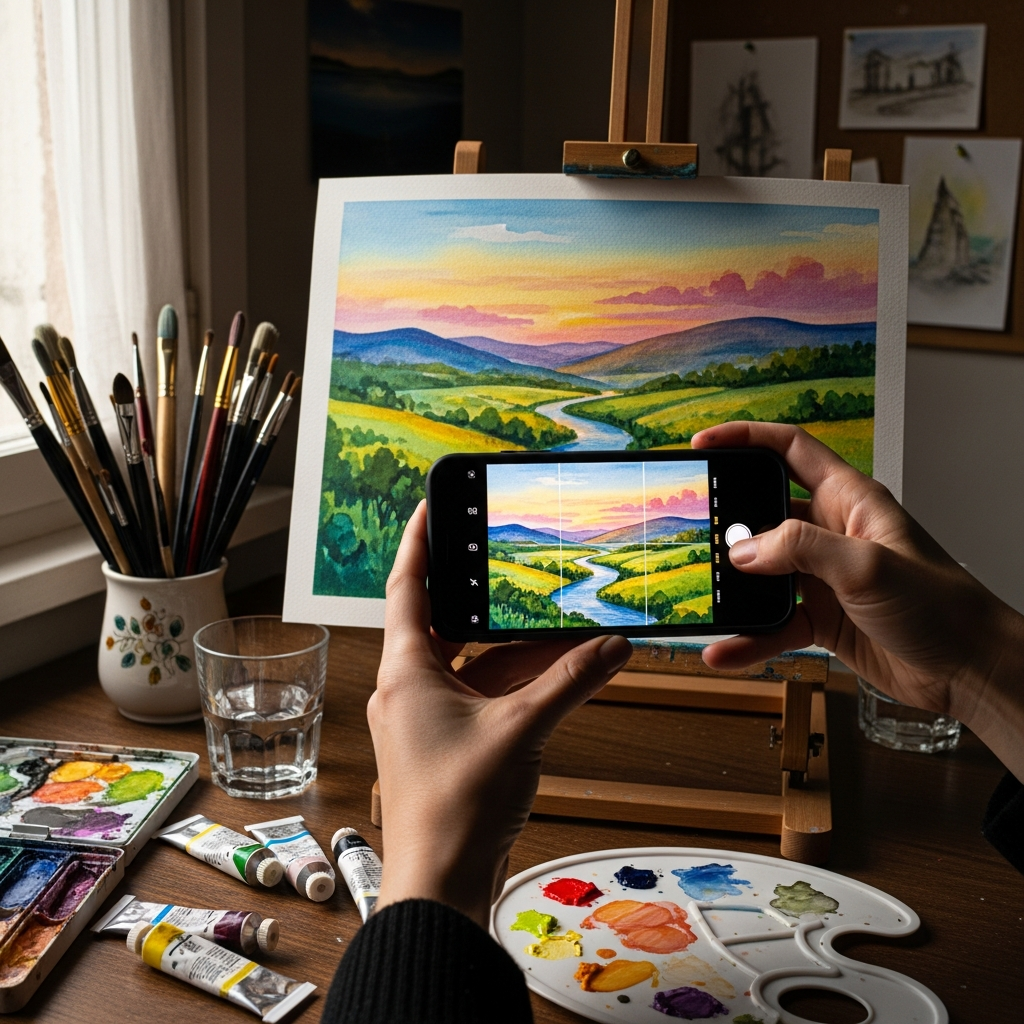
Platforms like Etsy or artists’ personal websites connect you directly with creators. This is where you’ll find truly unique, one-of-a-kind pieces and support independent artists.
Benefits:
- Often more affordable
- Direct communication with artists
- Custom commission possibilities
- Unique, undiscovered talent
Considerations:
- Less buyer protection
- Variable shipping standards
- Individual return policies
Many artists share their journey and techniques online. If you’re curious about how artists develop their unique styles, connecting with them directly can be enlightening.
Print-on-Demand & Limited Edition Sites: Accessible Art for Everyone
Sites like Art.com and 20×200 democratize art collecting by offering prints and limited editions at affordable prices.
Great for:
- First-time collectors
- Decorating on a budget
- Testing your taste before investing more
Remember:
- These are typically reproductions
- Limited investment value
- Still offer aesthetic enjoyment
NFT Art Marketplaces: The Digital Frontier
Platforms like OpenSea and Rarible have revolutionized digital art ownership through blockchain technology. NFT art represents a completely new category of collecting.
What makes NFTs different:
- Digital ownership verification
- Blockchain-based provenance
- New types of interactive and generative art
- Potential resale royalties for artists
Special considerations:
- Cryptocurrency required
- Environmental concerns
- Volatile market values
- Complex technical requirements
If you’re interested in how technology is changing art, explore how AI is transforming the art world and digital art creation.
Before You Buy: Essential Preparations
The best art purchases start with preparation. Here’s how to set yourself up for success.
Define Your Taste & Budget
Before clicking “add to cart,” ask yourself:
- What draws you in? Abstract explosions of color? Serene landscapes? Bold portraits?
- Where will it live? Measure your space and consider lighting
- What’s your total budget? Include frame, shipping, and insurance
Starting with painting genres and subject matter can help narrow your focus. If you’re drawn to specific periods, learning about painting styles and movements gives you vocabulary to describe what you love.
Budget Breakdown Example:
| Category | Percentage of Total | Example ($1,000 Budget) |
|---|---|---|
| Artwork | 65-75% | $650-750 |
| Framing | 10-15% | $100-150 |
| Shipping & Insurance | 10-15% | $100-150 |
| Contingency | 5-10% | $50-100 |
Research Artists & Styles

Take time to explore different artists and movements. Understanding famous artists and their styles helps you articulate what resonates with you.
Deep dive into:
- Artist exhibition histories
- Critical reviews and press coverage
- Gallery representations
- Similar works’ sale prices
Many contemporary artists maintain active social media presences. Following online artists can give you insights into their process and upcoming works.
Understand Your Space
Your walls tell a story. What do you want them to say?
Consider:
- Size matters: Too small looks lost; too large overwhelms
- Color harmony: Complement or contrast your existing palette
- Lighting: Natural vs. artificial affects how colors appear
- Theme: Does it fit your home’s overall aesthetic?
Understanding composition principles can help you evaluate how an artwork will function in your space.
Vetting Artworks and Sellers: Protect Your Investment
This is where most people get nervous—and rightfully so. Let’s break down how to verify authenticity and reputation.
Authenticity & Provenance: Your First Line of Defense
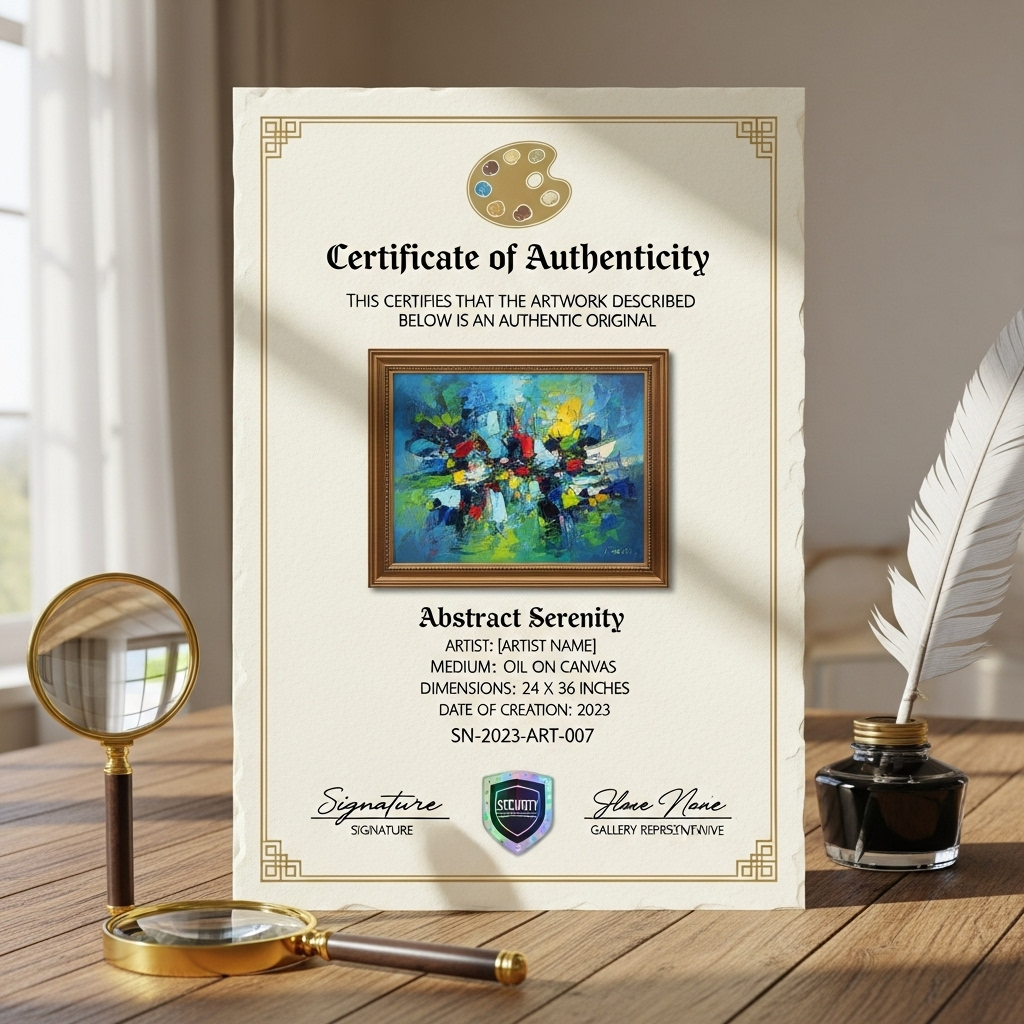
Provenance is the artwork’s documented history—basically its resume. For any serious purchase, demand:
- Certificate of authenticity (COA)
- Exhibition history
- Previous ownership records
- Purchase receipts
- Professional appraisals (for expensive pieces)
Modern technology is making authentication easier. Learn about authenticating artwork using scientific methods to understand how experts verify pieces.
“The certificate of authenticity is your artwork’s birth certificate and passport combined. Never compromise on documentation.”
Art authentication expert
Artist Reputation: Do Your Homework
Research the artist thoroughly:
- Exhibition history: Where has their work been shown?
- Education: Formal training or self-taught?
- Press coverage: What critics say matters
- Market presence: Are prices consistent across platforms?
- Social proof: Online presence and engagement
When evaluating artists, understanding how artists build their brands gives insight into their professionalism and career trajectory.
Seller/Gallery Reputation: Trust But Verify
Whether buying from a platform or individual seller:
Check:
- ✅ Customer reviews (read the negative ones)
- ✅ Years in business
- ✅ Professional affiliations
- ✅ Response time to inquiries
- ✅ Return policy clarity
- ✅ Social media presence
Red flags:
- 🚩 No clear return policy
- 🚩 Vague artwork descriptions
- 🚩 Pressure to buy quickly
- 🚩 Unwillingness to provide additional images
- 🚩 Prices too good to be true
Looking at established art galleries and their market influence can help you understand industry standards.
High-Quality Images & Descriptions: What to Look For
Professional listings include:
Images:
- Multiple angles and close-ups
- True-color accuracy
- Scale references
- Frame details (if included)
- Artist signature visibility
Descriptions:
- Exact dimensions
- Medium and materials
- Creation date
- Edition information (if print)
- Condition report
- Frame details
Don’t hesitate to request additional photos or even a video walkthrough. Legitimate sellers welcome informed buyers.
Condition Reports: Know What You’re Getting
For vintage or antique pieces especially, a detailed condition report is non-negotiable:
- Surface condition (cracks, fading, discoloration)
- Frame condition
- Previous restoration work
- Overall structural integrity
Understanding art preservation techniques helps you assess long-term care requirements.
Navigating the Purchase Process: Smart Buying Strategies
You’ve found a piece you love. Now what?
Pricing & Valuation: Understanding the Numbers
Art pricing isn’t arbitrary. Factors influencing value include:
| Factor | Impact on Price |
|---|---|
| Artist reputation | HIGH |
| Size | MEDIUM-HIGH |
| Medium | MEDIUM |
| Condition | HIGH |
| Provenance | MEDIUM-HIGH |
| Subject matter | MEDIUM |
| Market demand | HIGH |
| Rarity | HIGH |
Use art price calculators to understand baseline valuations. Keep tabs on art market trends to make informed investment decisions.
Negotiation Tips: When and How
You CAN negotiate on:
- Direct-from-artist purchases
- Gallery represented works (usually 10-15% off)
- Multiple piece purchases
- Auction reserve prices (sometimes)
You CANNOT usually negotiate:
- Fixed-price platforms
- Limited editions
- Auction results
- Estate sales
Negotiation etiquette:
- Show genuine interest
- Ask informed questions
- Make reasonable offers
- Be respectful
- Move quickly when you agree
Payment Methods & Security: Protect Yourself
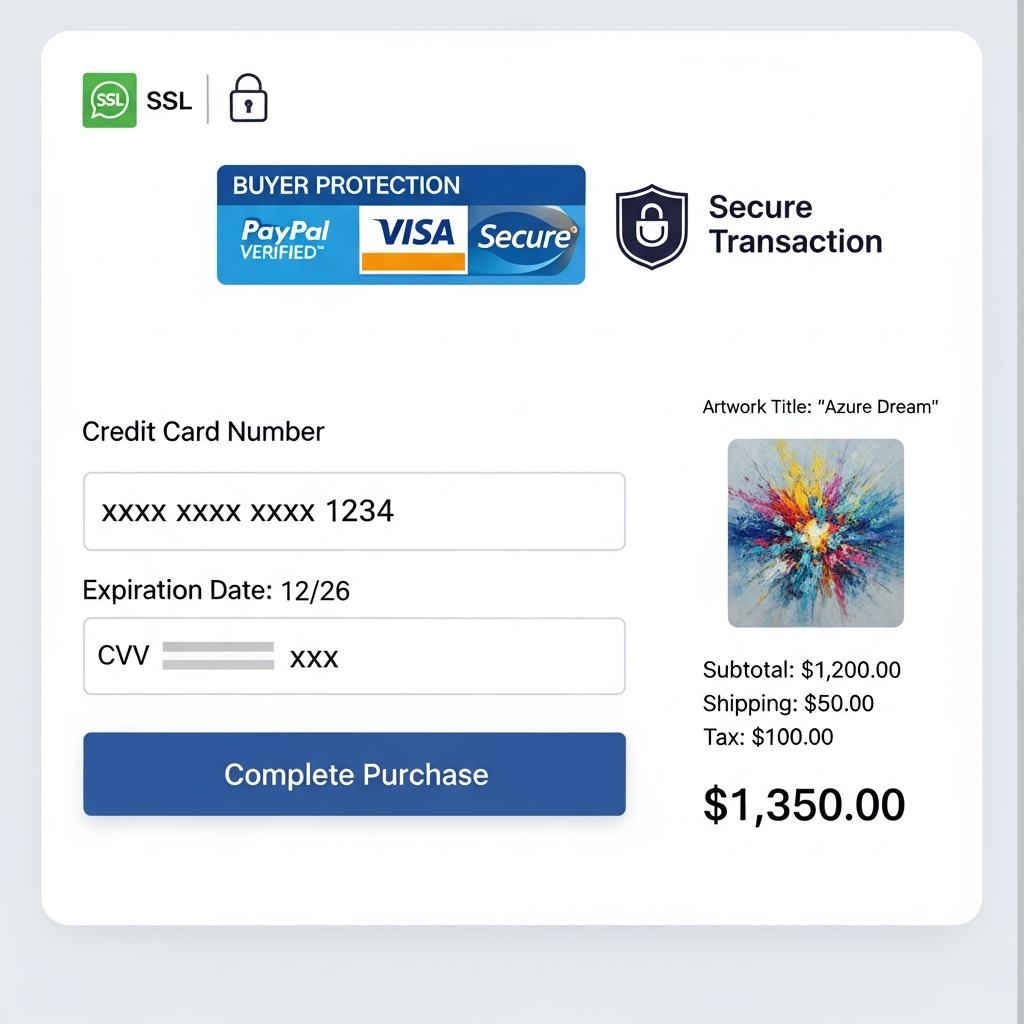
Safe payment methods:
- ✅ Credit cards (fraud protection)
- ✅ PayPal or similar escrow services
- ✅ Platform-integrated payment systems
- ✅ Bank transfers for high-value purchases (with proper documentation)
Avoid:
- ❌ Wire transfers to individuals
- ❌ Cash payments without receipts
- ❌ Cryptocurrency without verification (except NFTs)
- ❌ Personal checks for first-time transactions
Shipping & Insurance: The Hidden Costs
Shipping can make or break your deal. Expect:
Domestic shipping: $50-200 depending on size International shipping: $200-1,000+ Insurance: 1-3% of artwork value
Questions to ask:
- Who arranges shipping?
- Is insurance included?
- What packaging methods are used?
- What’s the typical delivery timeframe?
- Who’s responsible if damage occurs?
Pro tip: For valuable pieces, insist on white-glove shipping service with installation.
Return Policies: Your Safety Net
Return policies vary wildly. Key questions:
- What’s the return window? (30 days is standard)
- Who pays return shipping?
- Are there restocking fees?
- What condition must artwork be in?
- How long until refund is processed?
Read the fine print on:
- Custom or commissioned pieces (usually non-returnable)
- Sale or discounted items
- International purchases
Post-Purchase Care: Protecting Your Investment
Congratulations! Your artwork has arrived. Now let’s keep it beautiful.
Framing & Display: Presentation Matters
Proper framing protects and enhances your art. Check out the ultimate guide to framing and varnishing for comprehensive advice.
Framing basics:
- UV-protective glass: Essential for works on paper
- Acid-free materials: Prevents yellowing and damage
- Proper spacing: Mat keeps artwork from touching glass
- Professional mounting: Worth the investment
Display considerations:
- Avoid direct sunlight
- Maintain consistent temperature and humidity
- Keep away from heat sources
- Ensure secure hanging hardware
Documentation: Keep Everything
Create a dedicated file (physical and digital) containing:
- Purchase receipt
- Certificate of authenticity
- Shipping records
- Insurance documents
- Professional appraisals
- Restoration records
- High-quality photographs
This documentation increases resale value and helps with insurance claims.
Conservation: Long-Term Care

Basic maintenance preserves value:
Do:
- Dust gently with soft, dry cloth
- Monitor for environmental changes
- Schedule professional cleaning every 5-10 years
- Maintain insurance coverage
Don’t:
- Use cleaning products
- Attempt repairs yourself
- Hang in bathrooms or kitchens
- Store in basements or attics
For specific mediums, learn about preserving different types:
Common Pitfalls to Avoid: Learn From Others’ Mistakes
Impulse Buying
That flash sale or “last piece available” pressure can cloud judgment. Solution: Sleep on it for 24-48 hours. If you still love it, proceed.
Ignoring Shipping Costs
A $500 painting with $300 shipping isn’t really $500. Solution: Factor in all costs before committing.
Not Verifying Authenticity
Fake art is more common than you think. Solution: Always demand documentation and use reputable platforms.
Falling for Scams
If it seems too good to be true, it probably is. Solution: Stick to established platforms and verified sellers.
Buying Without Measuring
That “perfect” piece that doesn’t fit your wall isn’t perfect. Solution: Measure twice, buy once.
Skipping Return Policy Review
Assumptions about returns can cost you. Solution: Read and understand policies before purchasing.
Overlooking Total Cost
Frame, shipping, insurance, and hanging add up. Solution: Budget for the complete investment.
Online Art Marketplaces Buyer Guide: Final Thoughts
Buying art online has never been easier or more accessible, but success requires preparation and knowledge. Whether you’re drawn to emerging artists online, authentic art, or exploring digital art platforms like NFT marketplaces, this comprehensive online art marketplaces buyer guide equips you with the tools to make confident, informed decisions.
Remember: the best art purchase is one that brings you joy every time you see it. Take your time, do your research, verify authenticity, and trust your instincts. The perfect piece is out there waiting for you to discover it.
Start your collection today, armed with knowledge and confidence. The world of online art marketplaces is vast, exciting, and full of unique pieces just waiting to enhance your space and life.

Happy collecting!
Frequently Asked Questions
Where does someone start with art collecting?
Start by exploring your own taste. Visit online galleries and platforms like Saatchi Art, Artsy, and Etsy to see what draws your eye. Follow artists on social media, visit local galleries (virtual or in-person), and read about different art movements to develop your aesthetic sense. Set a modest budget for your first piece—$100-500 is perfect for beginners—and focus on buying what you genuinely love rather than what might increase in value.
What are the best places to buy art online?
The “best” platform depends on your needs and budget. Saatchi Art and Artsy excel for curated, gallery-quality works. Etsy connects you directly with independent artists for unique, affordable pieces. Sotheby’s and Christie’s online auctions serve collectors seeking investment-grade art. For prints and accessible art, try Art.com or 20×200. For digital art, explore OpenSea or Rarible NFT marketplaces. Consider checking how to sell art online to understand the seller’s perspective, which helps you identify quality platforms.
How do you know if art is authentic online?
Verifying authenticity requires multiple checks: (1) Request a certificate of authenticity (COA) signed by the artist or gallery; (2) Research the artist’s exhibition history and market presence; (3) Ask for detailed provenance documentation; (4) Verify the seller’s reputation through reviews and professional affiliations; (5) Request additional photos showing signature, condition, and details; (6) For valuable pieces, arrange independent professional authentication; (7) Use platforms with buyer protection policies. Modern technology helps—learn about scientific methods for authenticating artwork.
Is it safe to buy art online?
Yes, when you follow proper precautions. Stick to reputable platforms with buyer protection policies, use secure payment methods (credit cards, PayPal), thoroughly research sellers, verify authenticity documentation, read return policies carefully, and never wire money to unknown sellers. Start with smaller purchases to build confidence and experience. The major platforms have robust security measures, but your own due diligence remains your best protection. Understanding current art market trends helps you recognize fair pricing and avoid scams.
What should I look for when buying art?
Consider these key factors: (1) Emotional connection: Does it move you?; (2) Quality: Craftsmanship, materials, condition; (3) Authenticity: Documentation and provenance; (4) Size: Appropriate for your space; (5) Artist reputation: Exhibition history, press coverage, market presence; (6) Price: Fair market value plus total costs; (7) Condition: Current state and preservation needs; (8) Investment potential: Future value (if relevant); (9) Return policy: Protection if unsatisfied; (10) Display requirements: Framing, lighting, care needs. Learning to appreciate art deepens your ability to evaluate pieces meaningfully.
YouTube Video: Essential Guide to Buying Art Online
Citations:
- Saatchi Art – Curated Online Art Marketplace – https://www.saatchiart.com
- Artsy – The Art World Online – https://www.artsy.net
- Sotheby’s Online Auctions – https://www.sothebys.com/en/
- Christie’s Online – https://www.christies.com
- Etsy Art & Collectibles – https://www.etsy.com/c/art-and-collectibles
- OpenSea NFT Marketplace – https://opensea.io
- Rarible NFT Platform – https://rarible.com
- Art Authentication Guide – International Foundation for Art Research (IFAR) – https://www.ifar.org

